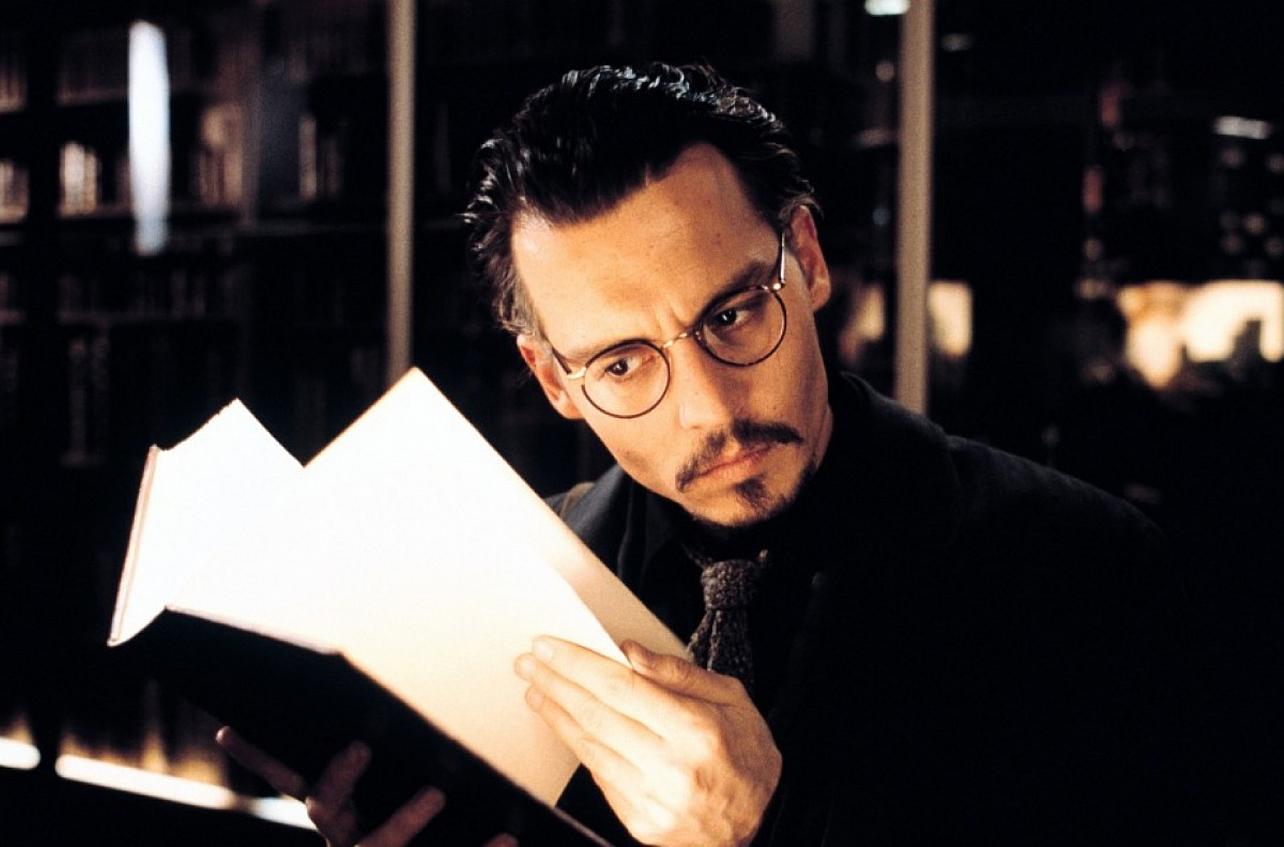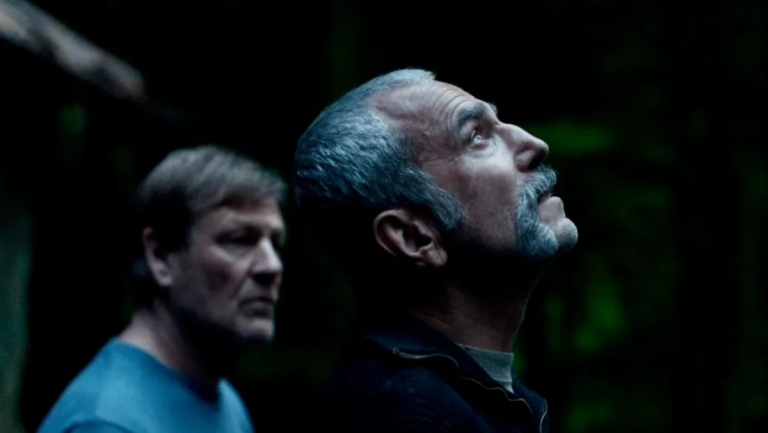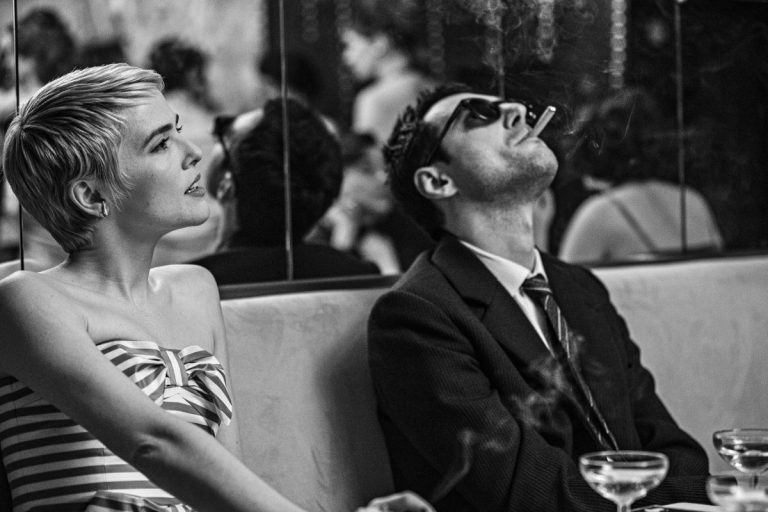Dean Corso’s trajectory in The Ninth Gate (1999) traces a transformation from cold cynicism to consuming obsession—from idle curiosity to something far more sinister. Introduced as a rare book dealer operating in a murky world of forgers, collectors, and whispered occult secrets, Corso is initially all pragmatism and profit. The film’s opening montage underscores his detachment: he deals not in belief, but in market value; not in mysticism, but in margins.
As Corso’s investigation into The Nine Gates of the Kingdom of Shadows takes him across Europe—from Spain to Portugal to France—his detached posture begins to erode. What begins as a transactional inquiry soon becomes an immersive descent into ritual, murder, and the promise of a power that defies reason.
At the heart of Corso’s journey lies a deceptively simple question: Is any of this real? The film dares both Corso and the viewer to suspend skepticism, to entertain the possibility that the supernatural is not superstition, but something veiled just beneath the surface of reality.
Corso’s shift—from observer to participant, from seeker to chosen—unfolds gradually, camouflaged by his own growing unease and the intoxicating pull of hidden truths. The Ninth Gate is not a treatise on Satanism, nor is it overtly about lust or obsession. Rather, it is a meditation on the seduction of forbidden knowledge—and the price one is willing to pay to possess it.
Spoilers Ahead
The Ninth Gate (1999) Plot Summary & Movie Synopsis:
What Is the Mystery Behind The Nine Gates?
The entire story hinges on a book with a cursed reputation. The Nine Gates of the Kingdom of Shadows, written by Aristide de Torchia in the 17th century, is rumored to summon the Devil himself. Only three copies remain, and wealthy collector Boris Balkan hires Dean Corso to authenticate which version is the true one. Corso quickly realizes something odd: each of the three books contains nine engravings, but only six are signed ‘AT’ for the author.
The remaining three differ subtly in each copy and are signed ‘LCF,’ presumably Lucifer. The implication is chilling: only by collecting all nine original ‘LCF’ engravings can one unlock the proper ritual to summon the Devil. But this isn’t just a bibliophile’s scavenger hunt. One by one, the owners of the books start dying under suspicious circumstances. And each time Corso moves closer to the full set of engravings, he also moves closer to something far more dangerous.
Who Is the Girl? What Role Does She Play?

Throughout his investigation, Corso is shadowed, and occasionally saved, by a mysterious woman known only as ‘The Girl.’ She has no name, no backstory, and seemingly supernatural abilities. She floats, she survives falls, and she appears whenever Corso is most in danger. At first, she seems like an ally, or perhaps a hired hand of Balkan.
But by the film’s final act, it becomes clear she is something else entirely. Her cryptic nature and otherworldly presence suggest that she may be a demonic entity or even Lucifer’s emissary. Her interest in Corso is not purely protective. It’s evaluative. She’s guiding him through the Ninth Gate, ensuring he proves himself worthy of crossing it. Her final act, sex with Corso against the backdrop of a burning castle, feels more like an unholy coronation than romance.
Why Did Balkan’s Ritual Fail?
The film’s climax sees Balkan finally assembling all nine engravings and attempting to perform the ritual at a remote castle. He believes the ritual will grant him invincibility and communion with the Devil. But something goes wrong. After setting himself ablaze, expecting to be immune to the flames, he instead dies in agony. His power, his arrogance, his collection, none of it saves him. Why? Because one engraving, engraving nine, was a forgery.
The Girl later reveals this to Corso, confirming what we’ve suspected all along: Balkan wasn’t chosen. He forced the ritual, forged the path, and expected results through entitlement, not understanding. The Devil, if he exists in this universe, rejects those who aren’t truly devoted or initiated.
What Does the Final Engraving Reveal?
After Balkan’s death, Corso is left shaken but not broken. The Girl disappears but leaves him a clue: go back to the Ceniza brothers. When he does, he finds their shop abandoned, but a single page falls into his hands: the authentic ninth engraving. It depicts a woman who closely resembles the Girl, riding a multi-headed beast toward the castle. Dawn breaks behind her. It’s the final piece of the puzzle, and it’s not just symbolic. It validates Corso’s journey and suggests that he, not Balkan, was the true seeker.
The final moments are deeply atmospheric. Corso walks through the now-glowing gates of the castle, alone, illuminated by supernatural light. No explanation is given. No voiceover. Just Corso and the Ninth Gate.
The Ninth Gate (1999) Movie Ending Explained:
What Happens to Dean Corso?
Corso doesn’t get rich. He doesn’t escape with a treasure. He doesn’t even fully understand what’s waiting on the other side. But he walks through it. This is the ultimate revelation of The Ninth Gate: true power does not belong to the wealthy collectors, the arrogant occultists, or the fanatics. It belongs to the seeker, the one who doesn’t just chase secrets but proves worthy of receiving them. Corso’s arc is complete. He begins the story as a man of logic, deals, and surface-level understanding.
But by the end, he has been chosen, not by Balkan, not by the Girl, but by the dark knowledge itself. While others die or fail, Corso endures because he never seeks power for its own sake. He follows the truth to its end, and the Ninth Gate opens… only for him. What lies beyond? The film never tells us. It doesn’t need to. Because “The Ninth Gate” isn’t about answers. It’s about the price of the question.



![Swallowed [2022]: ‘Fantasia’ Review: The Kind Of Messy Queer Horror We Need](https://79468c92.delivery.rocketcdn.me/wp-content/uploads/2022/07/Swallowed-768x405.jpg)


